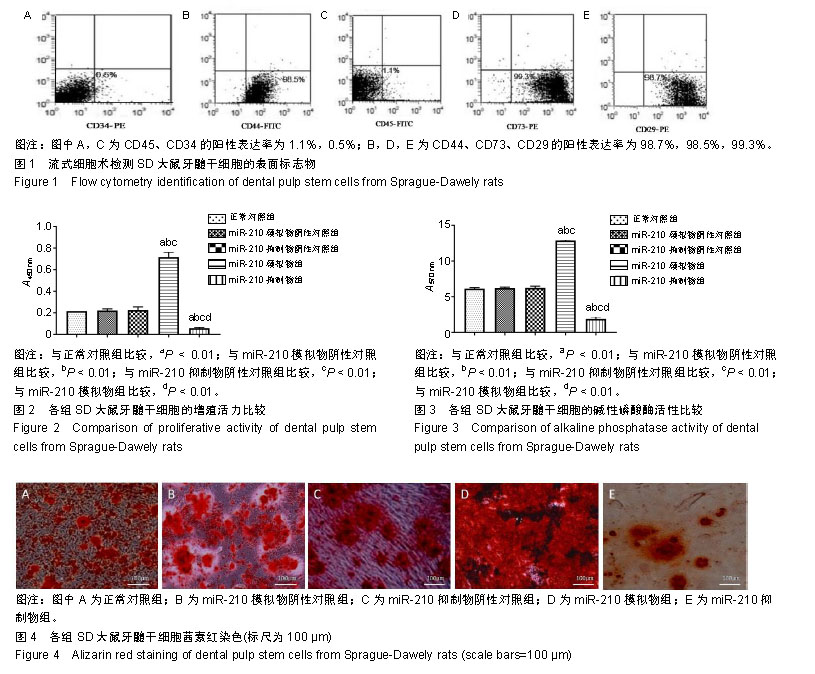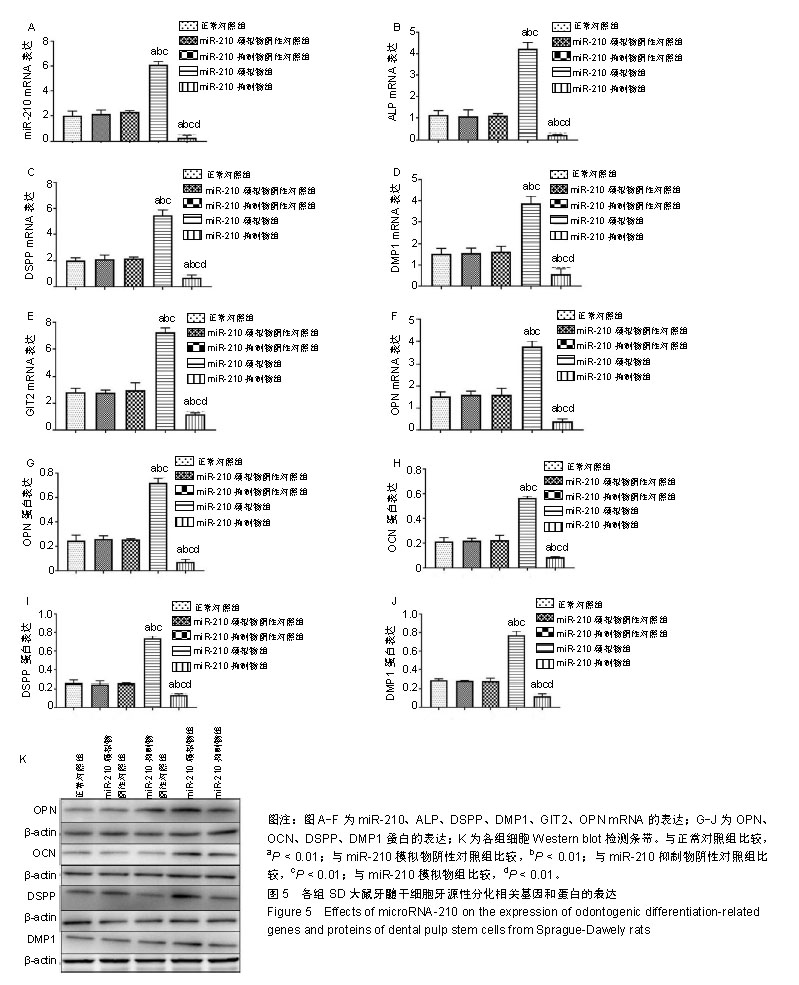| [1]Hassan NT, AbdelAziz NA. Oral Mucosal Stem Cells, Human Immature Dental Pulp Stem Cells and Hair Follicle Bulge Stem Cells as Adult Stem Cells Able to Correct Limbal Stem Cell Deficiency. Curr Stem Cell Res Ther. 2018;13(5):356-361.[2]Anitua E, Troya M, Zalduendo M. Progress in the use of dental pulp stem cells in regenerative medicine. Cytotherapy. 2018;20(4):479-498.[3]Xiao J, Cao P, Wang C, et al. The Forkhead Box C1, a Novel Negative Regulator of Osteogenesis, Plays a Crucial Role in Odontogenic Differentiation of Dental Pulp Stem Cells. Cell Reprogram. 2018;20(5): 312-319.[4]Heng BC, Ye X, Liu Y, et al. Effects of Recombinant Overexpression of Bcl2 on the Proliferation, Apoptosis, and Osteogenic/Odontogenic Differentiation Potential of Dental Pulp Stem Cells. J Endod. 2016; 42(4):575-583.[5]Lee YM, Shin SY, Jue SS, et al. The role of PIN1 on odontogenic and adipogenic differentiation in human dental pulp stem cells. Stem Cells Dev. 2014;23(6):618-630.[6]Asgary S, Nazarian H, Khojasteh A, et al. Gene expression and cytokine release during odontogenic differentiation of human dental pulp stem cells induced by 2 endodontic biomaterials. J Endod. 2014; 40(3):387-392.[7]Abuarqoub D, Awidi A, Abuharfeil N. Comparison of osteo/odontogenic differentiation of human adult dental pulp stem cells and stem cells from apical papilla in the presence of platelet lysate. Arch Oral Biol. 2015;60(10):1545-1553.[8]Peng S, Gao D, Gao C, et al. MicroRNAs regulate signaling pathways in osteogenic differentiation of mesenchymal stem cells (Review). Mol Med Rep. 2016;14(1):623-629.[9]Zou Z, Zhang Y, Hao L, et al. More insight into mesenchymal stem cells and their effects inside the body. Expert Opin Biol Ther. 2010; 10(2):215-230.[10]苗佳楠,李玉凤,张淑悦,等.微小RNA调控牙髓干细胞的研究进展[J].基因组学与应用生物学,2018,37(7):3153-3157.[11]张萍,朱聪惠,张纲,等.人牙髓干细胞向成牙本质细胞定向分化过程中miRNAs表达谱筛选及鉴定[J].实用口腔医学杂志, 2011,27(2):212-216.[12]张瑞涵,刘佳,聂姗姗,等.慢病毒载体介导绿色荧光蛋白转染大鼠牙髓干细胞[J].中国组织工程研究,2014,18(45):7299-7305.[13]刘明月,胡伟平,王晓芬,等.低浓度β-甘油磷酸钠培养牙髓干细胞向成牙本质细胞分化及相关因子的表达[J].中国组织工程研究,2015,19(41): 6688-6693.[14]贺泽斌,赵云鹤,杨桂姣,等.p53抑制剂对扩增晚期人骨髓间充质干细胞活力的影响[J].中国组织工程研究,2015,19(23): 3616-3620.[15]Theocharidou A, Bakopoulou A, Kontonasaki E, et al. Odontogenic differentiation and biomineralization potential of dental pulp stem cells inside Mg-based bioceramic scaffolds under low-level laser treatment. Lasers Med Sci. 2017;32(1):201-210.[16]Tammaro L, Vittoria V, Calarco A, et al. Effect of layered double hydroxide intercalated with fluoride ions on the physical, biological and release properties of a dental composite resin. J Dent. 2014;42(1):60-67.[17]徐克,冯桂娟,冯兴梅,等.过氧化氢刺激人牙髓干细胞的衰老进程[J].中国组织工程研究,2016,20(10):1481-1487.[18]Sohn S, Park Y, Srikanth S, et al. The Role of ORAI1 in the Odontogenic Differentiation of Human Dental Pulp Stem Cells. J Dent Res. 2015;94(11):1560-1567.[19]Lian M, Zhang Y, Shen Q, et al. JAB1 accelerates odontogenic differentiation of dental pulp stem cells. J Mol Histol. 2016;47(3):317-324.[20]Liu M, Zhao L, Hu J, et al. Endothelial cells and endothelin?1 promote the odontogenic differentiation of dental pulp stem cells. Mol Med Rep. 2018;18(1):893-901.[21]Zhou M, Liu NX, Shi SR, et al. Effect of tetrahedral DNA nanostructures on proliferation and osteo/odontogenic differentiation of dental pulp stem cells via activation of the notch signaling pathway. Nanomedicine. 2018;14(4):1227-1236.[22]Mens MMJ, Ghanbari M. Cell Cycle Regulation of Stem Cells by MicroRNAs. Stem Cell Rev. 2018;14(3):309-322.[23]Timari H, Shamsasenjan K, Movassaghpour A, et al. The Effect of Mesenchymal Stem Cell-Derived Extracellular Vesicles on Hematopoietic Stem Cells Fate. Adv Pharm Bull. 2017;7(4):531-546.[24]Mortada I, Mortada R. Epigenetic changes in mesenchymal stem cells differentiation. Eur J Med Genet. 2018;61(2):114-118.[25]Mendelsohn AR, Larrick JW. Inflammation, Stem Cells, and the Aging Hypothalamus. Rejuvenation Res. 2017;20(4):346-349.[26]Asgharzadeh A, Alizadeh S, Keramati MR, et al. Upregulation of miR-210 promotes differentiation of mesenchymal stem cells (MSCs) into osteoblasts. Bosn J Basic Med Sci. 2018;18(4):328-335.[27]Kang S, Kim SM, Sung JH. Cellular and molecular stimulation of adipose-derived stem cells under hypoxia. Cell Biol Int. 2014;38(5): 553-562.[28]Zeng L, Sun S, Han D, et al. Long non-coding RNA H19/SAHH axis epigenetically regulates odontogenic differentiation of human dental pulp stem cells. Cell Signal. 2018;52:65-73.[29]Zhu L, Ma J, Mu R, et al. Bone morphogenetic protein 7 promotes odontogenic differentiation of dental pulp stem cells in vitro. Life Sci. 2018;202:175-181.[30]Liu N, Zhou M, Zhang Q, et al. Stiffness regulates the proliferation and osteogenic/odontogenic differentiation of human dental pulp stem cells via the WNT signalling pathway. Cell Prolif. 2018;51(2):e12435.[31]Zou T, Dissanayaka WL, Jiang S, et al. Semaphorin 4D Enhances Angiogenic Potential and Suppresses Osteo-/Odontogenic Differentiation of Human Dental Pulp Stem Cells. J Endod. 2017;43(2): 297-305.[32]Mortada I, Mortada R. Epigenetic changes in mesenchymal stem cells differentiation. Eur J Med Genet. 2018;61(2):114-118.[33]Li B. MicroRNA Regulation in Osteogenic and Adipogenic Differentiation of Bone Mesenchymal Stem Cells and its Application in Bone Regeneration. Curr Stem Cell Res Ther. 2018;13(1):26-30. |
.jpg)


.jpg)
.jpg)
.jpg)